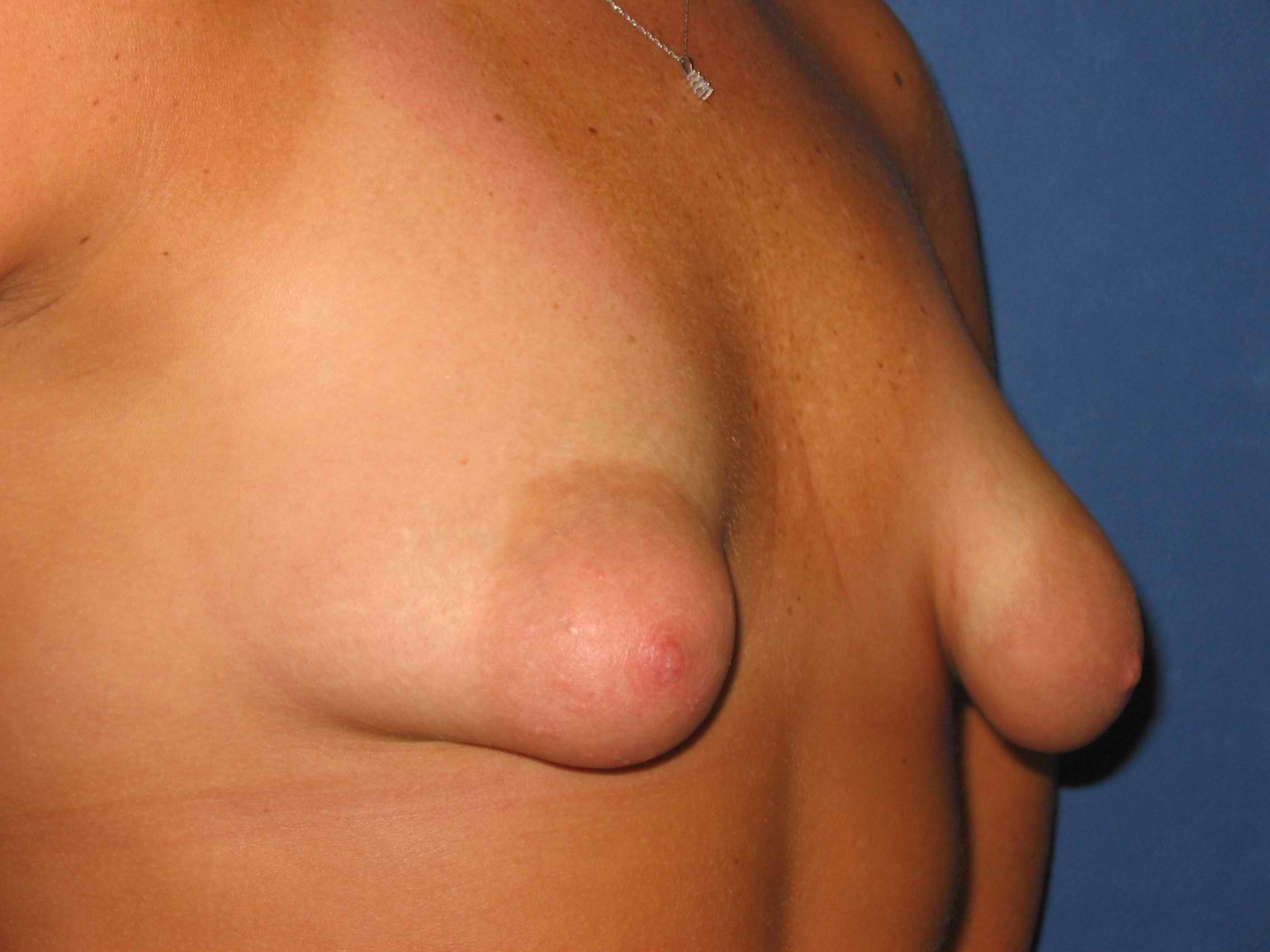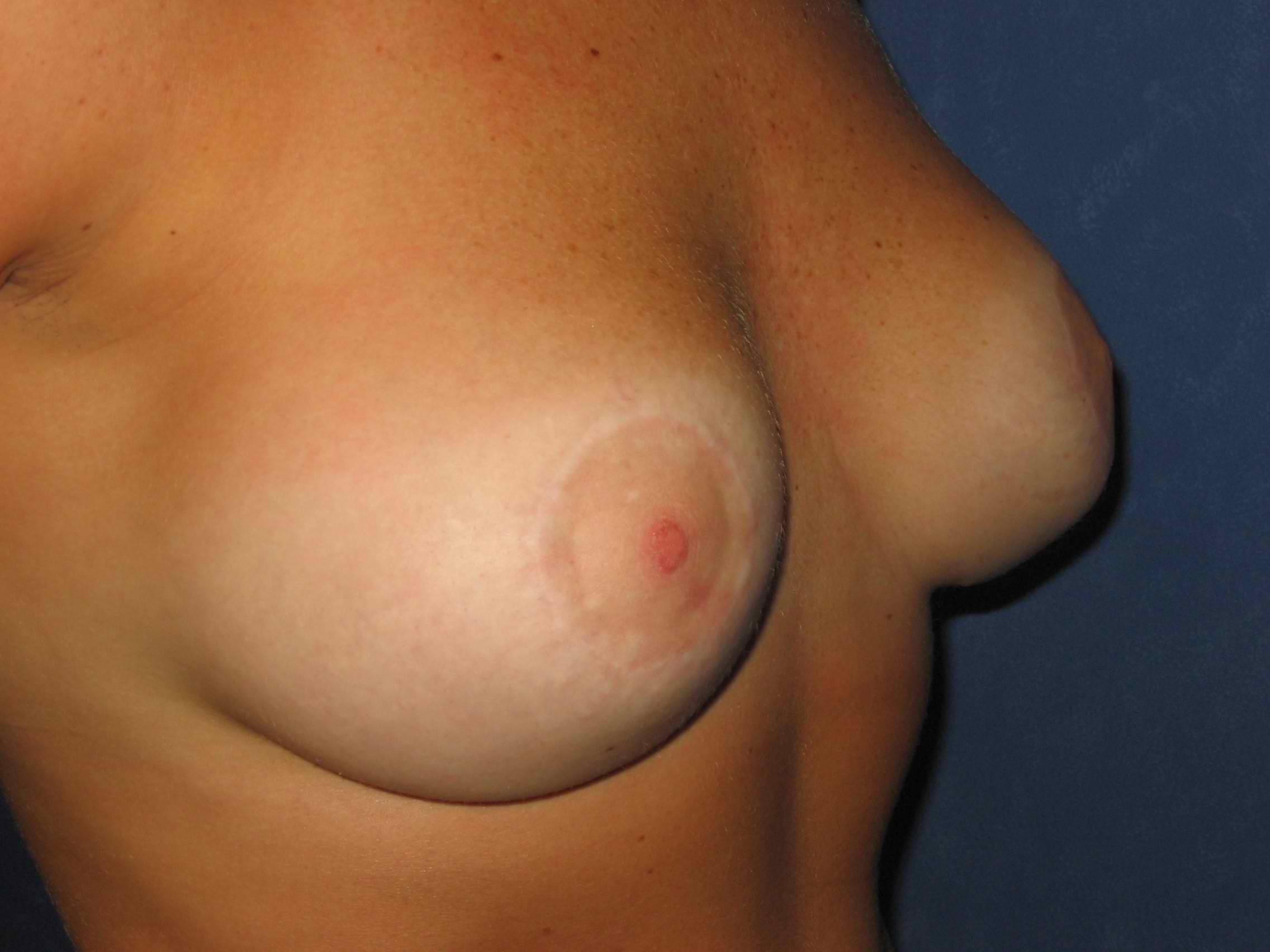Tubular Breasts can be Significantly Improved with Implants and a Small Lift
 A tubular breast condition or constricted breasts as they are also known, is relatively common among women and can occur in a wide variety of severities. In this situation the areola is larger than normal and it bulges out more than it is supposed to as breast tissue has ‘herniated’ out into it. In addition, the base of the breast against the chest wall is smaller than normal and the distance from the crease under the breast to the bottom edge of the areola is shorter than what it should be. This is where the ‘constricted’ name gets its origin as the base of the breast appears to be tightened or constricted.
A tubular breast condition or constricted breasts as they are also known, is relatively common among women and can occur in a wide variety of severities. In this situation the areola is larger than normal and it bulges out more than it is supposed to as breast tissue has ‘herniated’ out into it. In addition, the base of the breast against the chest wall is smaller than normal and the distance from the crease under the breast to the bottom edge of the areola is shorter than what it should be. This is where the ‘constricted’ name gets its origin as the base of the breast appears to be tightened or constricted.
 In some cases, the condition is very mild with just a little protrusion of the breast tissue into the areola or the breast has just a slightly shortened distance from the crease to the areola. In severe cases, the areola encompasses most of the surface of the breast with marked protrusion of breast tissue that almost looks like a bubble and the base of the breast is so constricted that it is no larger or even smaller than the size of the areola so that the breast projects out like a tube.
In some cases, the condition is very mild with just a little protrusion of the breast tissue into the areola or the breast has just a slightly shortened distance from the crease to the areola. In severe cases, the areola encompasses most of the surface of the breast with marked protrusion of breast tissue that almost looks like a bubble and the base of the breast is so constricted that it is no larger or even smaller than the size of the areola so that the breast projects out like a tube.
The treatment of tubular breasts consists of performing a periareolar mastopexy, making the areola considerably smaller and pushing the herniated breast tissue back into the breast. At the same time, the base of the breast tissue is scored or cut to allow it to spread out and widen the base of the breast. Implants are also an important part of correcting constricted breasts. An appropriate sized implant must be chosen to increase volume, which is typically needed, and to help widen the base of the breast. My preference is to always put the implant under the muscle and smooth, round implants are usually best.
Contact Us
Contact Us to schedule an appointment to discuss how James D. McMahan, MD, FACS can help you!